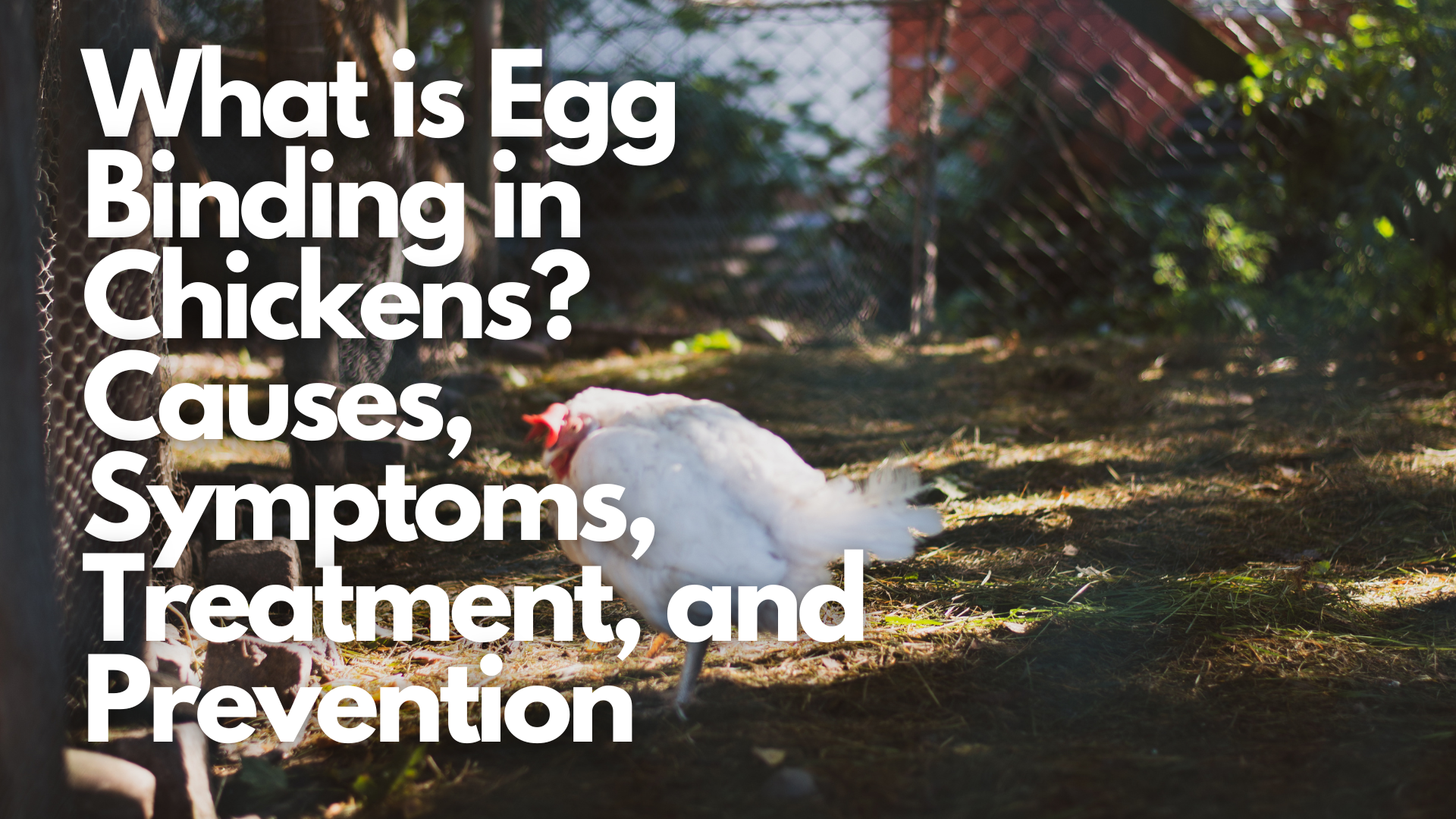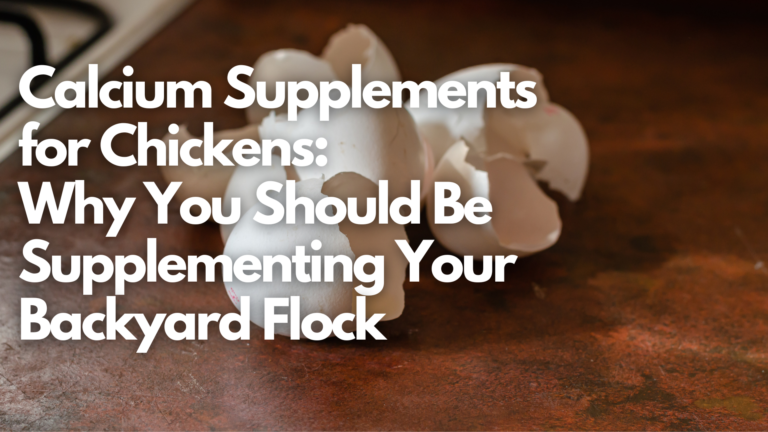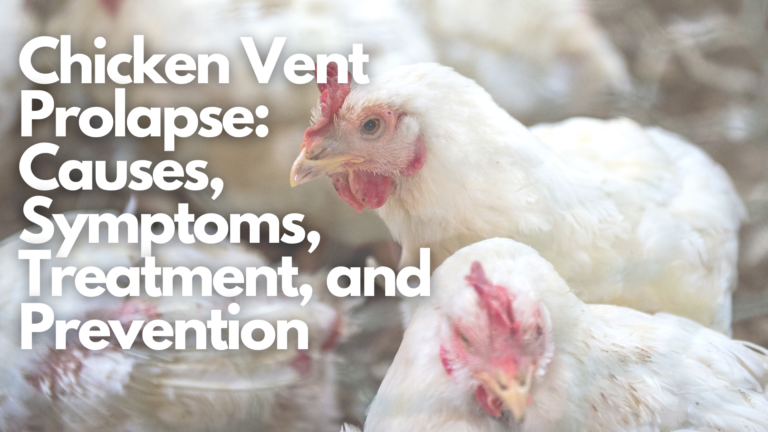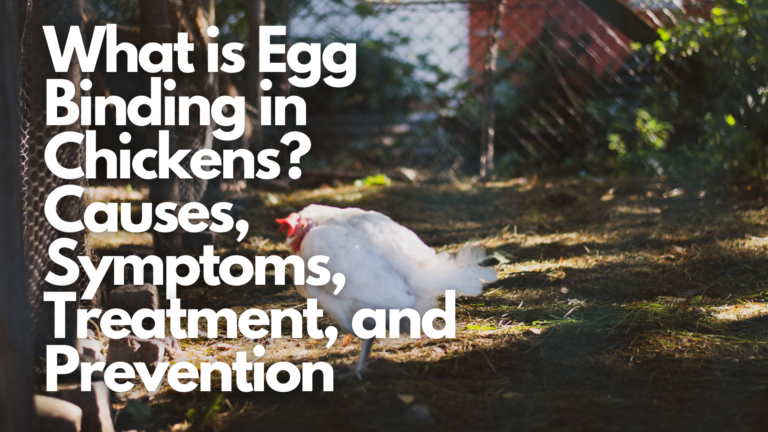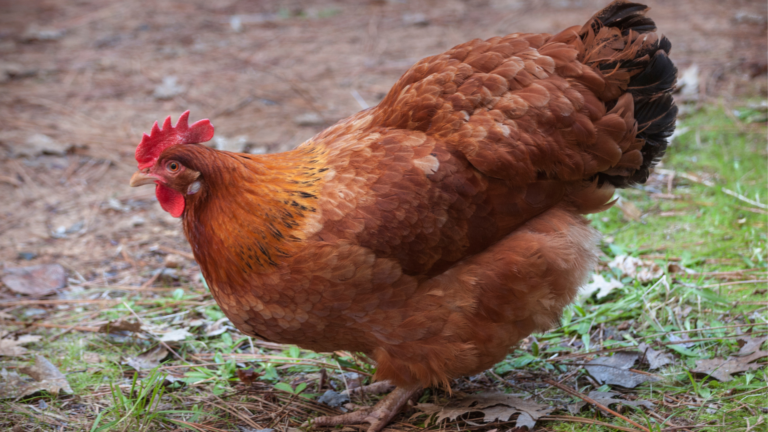Egg binding, also known as egg dystocia, is a life-threatening condition that can affect female chickens, causing them to have difficulty laying an egg. It is a potentially serious condition that requires prompt attention and appropriate intervention.
As a backyard chicken keeper, it is important that you know the causes, symptoms, treatment options, and prevention strategies for egg binding in chickens.
Understanding Egg Binding
Egg binding occurs when a hen is unable to expel an egg from her oviduct, resulting in a blockage or obstruction. It can affect chickens of any age, but it is more commonly observed in mature laying hens. Egg binding is a distressing condition that can lead to severe discomfort, health complications, and even mortality if left untreated.
Causes of Egg Binding in Chickens
Several factors can contribute to the development of egg binding in chickens, including:
- Oversized or misshapen eggs
- Lack of proper nutrition, including calcium deficiency
- Reproductive abnormalities or disorders
- Stressful or inadequate living conditions
- Obesity or excessive body weight
- Inadequate muscle tone in the reproductive tract
Recognizing the Signs & Symptoms of an Egg-Bound Chicken

It is important for poultry owners to be attentive and knowledgeable about the symptoms of egg binding in chickens. Recognizing these signs early on can help prompt timely intervention and prevent potential complications. Here are some key symptoms to look out for:
Visible discomfort, restlessness, or lethargy
An egg-bound hen may exhibit signs of discomfort, restlessness, or appear agitated. She may exhibit unusual behaviors such as frequent pacing, excessive wing flapping, or uneasiness. The hen may also seem lethargic, showing a lack of energy or decreased activity levels compared to her usual behavior.
Repeated squatting or straining without producing an egg
One of the telltale signs of egg binding is a hen repeatedly squatting or abdominal straining as if trying to lay an egg but without any successful results. She may make efforts to find a comfortable position in the nesting box or display a persistent squatting posture as she attempts to expel the egg.
Distended abdomen or a swollen cloaca
An egg-bound hen may have a visibly distended abdomen, which can be a result of the egg trapped in the oviduct. The abdomen may feel firm or tense to the touch. Additionally, the vent area (the external opening of the oviduct) may show signs of prolapse and appear swollen, red, or protruding.
Loss of appetite or reduced water intake
A hen experiencing egg binding may exhibit a decreased appetite or refuse to eat altogether. She may show disinterest in her usual feed, treats, or foraging activities. Similarly, she may also reduce her water intake, which can be a sign of discomfort or pain.
Labored breathing or other signs of distress
In severe cases, egg binding can lead to respiratory distress, evidenced by rapid or labored breathing. The hen may exhibit unusual panting, gasping for air, or a strained breathing pattern. These signs suggest that the hen’s overall health is being compromised and immediate attention is required.
It is important to note that the presence of one or more of these symptoms does not necessarily confirm egg binding, as other health conditions may manifest with similar signs. However, if a chicken exhibits multiple symptoms persistently or shows signs of distress, it is crucial to closely monitor her and seek veterinary assistance if needed.
Remember, early recognition of these symptoms is crucial for prompt intervention and increasing the chances that your chicken survives.
Treatment Options for an Egg-Bound Chicken

When confronted with an egg-bound chicken, it is crucial to take immediate action to alleviate the condition and provide the affected hen with the best chance of successfully passing the egg. Here are some treatment options to consider:
Provide a warm bath
A warm bath can help relax the muscles and promote the relaxation of the reproductive tract, potentially facilitating the passage of the egg. Gently place the hen in a tub of warm water with a temperature between 100-105°F (38-40°C). Adding a small amount of epsom salts to the bathwater can provide additional muscle relaxation benefits. Allow the hen to soak for about 15-20 minutes, monitoring her behavior and ensuring her head remains above water.
Lubrication
Applying a water-based lubricant to the vent area can help ease the egg’s passage by reducing friction and providing lubrication. Common options include mineral oil or petroleum jelly. Carefully apply a small amount of lubricant around the vent, taking care not to push any debris or bacteria into the reproductive tract. This can be done before or after the warm bath while the hen’s feathers are still damp.
Massage and gentle pressure
Massaging the hen’s abdomen and applying gentle pressure around the vent area can encourage the movement of the egg through the oviduct. Use your fingertips to gently massage the abdomen in a circular motion, working in the direction of the vent. Apply slight pressure around the vent with your fingertips, but avoid excessive force that could cause injury. These techniques can help stimulate contractions and promote the egg’s progression.
Emotional Support and Comfort
During the treatment process, it is important to provide emotional support and ensure the comfort of the egg-bound hen. Keep her in a quiet, stress-free environment away from disturbances and other flock members. Offer her warmth by providing a heat source, such as a heat lamp or a heating pad set on low. Ensure she has access to fresh water, which should be provided in a shallow container to minimize the risk of drowning. Offer easily digestible food, such as wetted crumbles or soft treats, to prevent further strain on her digestive system.
Remember, each case of egg binding may vary in severity, and professional veterinary care should always be considered when dealing with this condition. By taking prompt action and providing the necessary support, you can increase the chances of a successful outcome and ensure the well-being of your egg-bound chicken.
How to Prevent Egg Binding in Chickens
Prevention is key to minimizing the occurrence of egg binding in chickens. Consider implementing the following preventive measures:
- Provide a well-balanced diet: Ensure chickens receive proper nutrition, including a diet rich in calcium, to support eggshell formation and reproductive health.
- Adequate calcium supplementation: Offer calcium supplements, such as crushed oyster shells or commercial calcium sources, to ensure hens receive sufficient calcium to form strong eggshells.
- Maintain a healthy weight: Obesity can increase the risk of egg binding. Monitor your chickens’ weight and provide appropriate feed and exercise to maintain a healthy body condition.
- Optimal nesting boxes: Ensure nesting boxes are clean, comfortable, and adequately sized. Use soft bedding material to minimize stress on the reproductive system.
- Reduce stress factors: Minimize stressors in the chickens’ environment, such as overcrowding, sudden changes, or disturbances, as stress can contribute to egg binding.
- Regular health checks: Conduct routine health checks, including examining the vent area, to detect any abnormalities early on and take necessary preventive measures.
When Should You Take an Egg Bound Chicken to the Vet?
If home remedies and preventive measures do not prevent or resolve egg binding, it is essential to seek professional veterinary care. A veterinarian experienced in poultry health can conduct a thorough examination, offer diagnostic tests if needed, and provide appropriate treatment options. These may include administering medications to promote egg passage, manually removing the egg, or performing a surgical procedure in severe cases.
Egg Binding in Chickens Requires Prompt Intervention:
It is important for all backyard chicken keepers to understand the causes, recognizing the symptoms, and implementing preventive measures, poultry owners can minimize the risk of egg binding in their flock.
Prompt treatment, along with supportive care, can increase the chances of successful egg passage and promote the overall well-being of the affected hen.
If you encounter any concerns related to egg binding or other poultry health issues, consulting with a veterinarian with expertise in poultry care is always recommended. With proper management and proactive measures, you can help ensure the optimal reproductive health of your chickens and promote their overall vitality.
